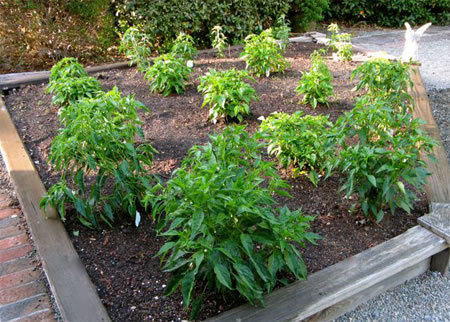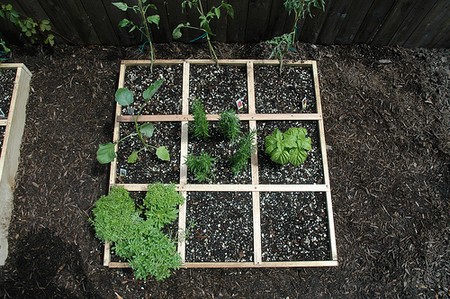Best Way to Use Cloches and Frost Protection to Grow Vegetables
A Gardening Which? trial found that soil temperatures could be 2°C higher under a cloche than outside, and this means that crops such as lettuces were about ten days more advanced. Cloches also protect plants and soil from heavy rain and wind.
The two main structures used to protect plants are cloches and coldframes. Cloches can be moved about to protect seeds and plants growing in the ground, while a coldframe provides conditions that are halfway between those in the greenhouse and those outside. It is used to protect plants prior to planting out. Garden fleece is now widely used to protect plants from frost
Both cloches and coldframes can be made of glass or various types of plastic. Glass and polycarbonate retain more heat than PVC or polypropylene. Polythene is the least efficient material. Enough light reaches plants grown under glass, PVC or polycarbonate, but light reduction can be a problem with polypropylene and polythene. Use cloches and coldframes in a sunny site and keep them clean. Plastics will scratch and discolor in time; paying more for a material that has been stabilised to protect it against ultraviolet light damage is worthwhile. Thin, unstabilised polythene usually needs to be replaced every year but thicker, stabilised polythene may last two to three years. Twin-walled polypropylene lasts three to five years whilst moulded polypropylene and stabilised PVC last five to ten years. Polycarbonate should last ten years.
Cloches
Put cloches in position two weeks in advance of sowing or planting, so the soil has a chance to dry out slightly and warm up.
You can buy a ready-to-use cloche or buy cloche clips then get your own glass cut to fit. If you have raised beds, it is well worth making your own cloche. Create a series of hoops (made from overflow piping) 60cm apart covering the width of the bed. Cover with polythene sheeting.
When choosing a ready-to-use cloche, consider the following points. Match the cloche to your site. Only the bell jars and lantern cloches make attractive features so these are the ones to use for borders, potagers or other ornamental areas. Other cloches are best in vegetable plots and allotments -most are designed to cover rows of vegetables. Some designs are prone to being blown away, so in windy sites look for a design that can be firmly secured to the ground.
Match the cloche to your crop. Small tent cloches 30-45cm wide are useful for getting seedlings and young plants off to a good start, but plants soon outgrow them. Tunnel cloches or barn cloches are a better shape for more mature plants.
A cloche should be convenient to use. It should be easy to tend the crop and to move the cloche. You will need to ventilate the cloche on warm, sunny days, either by removing the whole cover, taking off the sides or adjusting the panels or flaps.
Coldframes
A coldframe is like a large box or cupboard and provides an environment halfway between indoors and outdoors. It is usually placed near a greenhouse. It saves you time as you do not need to keep moving trays of young plants outdoors during the day and back indoors in the evening, and so is worth considering if you grow a reasonable amount of tender plants (this could include bedding plants as well as vegetables).
Coldframes with an aluminium or wooden frame and a glass or plastic lid can be bought from larger garden centres or ordered from greenhouse catalogues, but d-i-y-minded people could make their own from recycled materials. Designs with sides as well as lids that let in light are better for cropping plants.
Garden fleece
Garden fleece is sold in packs or rolls and can be used in place of cloches or coldframes. Lay it over plants after sowing or planting or while getting them used to outdoor conditions. A double layer of fleece will protect plants from frost when the outside temperature is down to -4°C. Fleece is more versatile than a fixed structure but it needs to be secured well at the edges and is prone to ripping. Remove the fleece once the weather gets warm. Top-quality fleece can be washed in the washing machine and re-used several times.
Extending the season
In the spring, if you use cloches, you can sow or plant a whole range of crops such as lettuces, carrots, spring onions and radishes earlier than normal, although you still need to check the soil temperature.
In summer, make an August sowing of summer lettuces in a cloche or coldframe. Start them off with the cloche ends removed or the coldframe top removed. Cover the crop when the first frost is forecast.
In autumn, cloches can be placed over growing crops to encourage ripening or to preserve leaf quality. For example, large cloches are put over tomatoes or courgettes in late September to extend cropping into the autumn. Cordon tomatoes need to be untied from their supports and laid on sheet mulch before they are covered.
Herbs such as parsley, chervil and chives can be covered to improve leaf quality. Likewise, hardy crops such as oriental greens, spinach, chicory and endive benefit from cloche protection from October onwards.
Categories
Advertisements
Recent Articles
 How to Understand Bed Sizes – A Small Guide
How to Understand Bed Sizes – A Small Guide How to Select Some Must Have Kitchen Accessories
How to Select Some Must Have Kitchen Accessories Best Way to Change a Car Tire
Best Way to Change a Car Tire Best Way to Write an Affirmation
Best Way to Write an Affirmation Best Way to Take Charge of Your Financial Life
Best Way to Take Charge of Your Financial Life Best Way to Survive a Party When You Don’t Know Anyone
Best Way to Survive a Party When You Don’t Know Anyone Best Way to Stop Self Sabotaging Yourself
Best Way to Stop Self Sabotaging Yourself Best Way to Start Journal Writing
Best Way to Start Journal Writing Best Way to Speak with a Powerful Voice
Best Way to Speak with a Powerful Voice Best Way to Simplify Your Life
Best Way to Simplify Your Life Best Way to Respond to a Put-Down
Best Way to Respond to a Put-Down Best Way to Reduce Acne Breakouts
Best Way to Reduce Acne Breakouts Best Way to Recover from Dining Disasters
Best Way to Recover from Dining Disasters Best Way to Quit Your Job Gracefully
Best Way to Quit Your Job Gracefully Best Way to Make Your Own Website
Best Way to Make Your Own Website




Leave a Reply